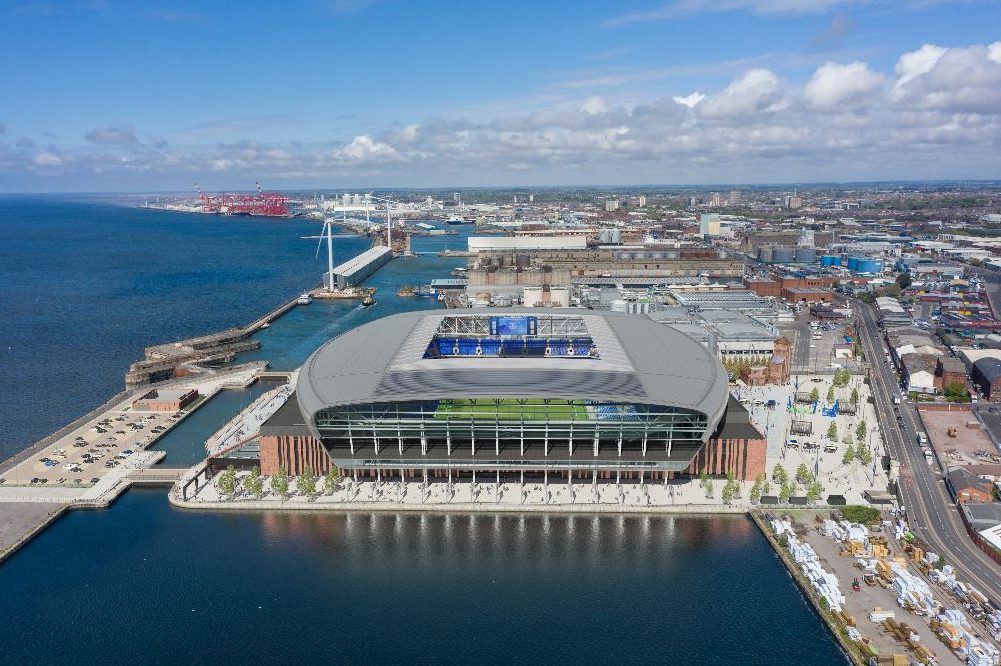Liverpool City Council has proposed the establishment of a ‘Football Match Parking Zone’ around Everton FC’s new stadium at Bramley-Moore Dock, aiming to streamline game-day logistics and mitigate congestion and pollution in the city.
The initiative encompasses multiple measures such as new resident and industrial parking areas, parking restrictions, and improved public transport access, designed to modernise parking infrastructure while accommodating the influx of fans and visitors.
Proposed Parking Measures
A comprehensive proposal has been put forth to introduce a ‘Football Match Parking Zone’ within a 30-minute walk of the new Everton Stadium, encompassing the Ten Streets district and wider city centre area. Specific measures include the establishment of new resident parking areas, new taxi ranks, and designated match day bus stands. The initiative aims to alleviate traffic congestion by implementing parking restrictions and adjusting the hours of operation for existing zones. New industrial parking zones are also planned south and north of Boundary Street to further cater to the area’s needs.
Addressing the Accessibility Challenge
The new stadium’s waterfront location presents a unique challenge due to it being served by only one main road. To address this, the Liverpool City Region Combined Authority, Merseyrail, Network Rail, and Everton FC are collaborating to develop a new crowd management zone and an additional entrance at Sandhills station.
This collaborative effort is focused on enhancing access to public transport for fans and visitors. The first phase of construction will commence soon, aiming to improve the overall matchday experience by easing travel to and from the stadium.
Economic and Social Impact
The £760 million stadium, set to open for the 2025/26 football season, promises significant economic and social benefits for the local community.
Liverpool City Council’s Cllr Dan Barrington highlighted the transformative potential of the new stadium for the Ten Streets district and the Kirkdale community. The stadium will attract substantial visitor numbers, necessitating meticulous management of arrivals and departures. Drawing on experience from Goodison Park and Anfield, existing crowd control measures will be adapted to ensure smooth operations.
Infrastructure Investments
Liverpool City Council has invested more than £20 million in the highways infrastructure around Bramley-Moore Dock. The upgrades include a permanent segregated cycle lane extending from the city centre to Liverpool’s northern border in Sefton. This cycle lane runs directly past the new stadium, promoting active travel options.
The development is indicative of a forward-thinking approach to urban planning, aiming to reduce congestion and improve air quality in the area. These improvements are part of broader efforts to enhance the city’s transport infrastructure in anticipation of the stadium’s opening.
The collaborative initiatives between the local authorities and transport organisations are geared towards creating a seamless matchday experience, demonstrating a proactive response to the anticipated challenges of managing large crowds in the North Docks area.
Engagement with Local Residents and Businesses
Proactive engagement with local residents and businesses has been a cornerstone of the proposal. Feedback from these stakeholders has informed the plan, ensuring it accommodates their needs and addresses concerns regarding the potential impact of the new stadium.
The council has announced that residents and surrounding businesses will be invited to apply for relevant parking permits, further integrating community needs into the parking zone framework.
Ensuring the community is actively involved in these developments reflects the council’s commitment to inclusive and considerate urban planning.
Long-Term Vision for the Area
The proposed measures are designed to complement the broader modernisation of parking across Liverpool’s city centre. By incorporating new technologies and strategies, the council aims to create a more efficient and user-friendly parking system.
Looking ahead, the new Everton stadium has already been selected as a venue for the UEFA European Championships in 2028, underscoring its potential as a major event hub beyond football. The stadium’s design and the proposed parking solutions are geared towards accommodating a wide range of events, enhancing Liverpool’s status as a prime destination for sports and entertainment.
Endorsements from Key Figures
Cllr Dan Barrington, a key advocate for the project, acknowledged the unique challenges posed by the stadium’s location. He emphasised the coordinated efforts among city partners to make necessary improvements and promote active travel options.
Barrington stated, “Everton Stadium is going to be transformational, especially for the surrounding Ten Streets district and the wider Kirkdale community. As well as the economic benefit, the vast volume of people the stadium will attract – and how they arrive and depart needs to be carefully managed.”
He added, “There’s more to be done but all the partners are talking to make those improvements. We’ll also be looking to encourage as many active travel options as possible for those attending the games or other events there, which is a win-win for everyone in terms of managing congestion and air quality and promoting healthy habits.”
The creation of a ‘Football Match Parking Zone’ around the new Everton Stadium represents a significant step forward in urban planning and transportation management for Liverpool.
Through combined efforts and substantial investment, Liverpool City Council aims to create a seamless, efficient, and environmentally friendly matchday experience, transforming the area into a thriving hub for sports and entertainment.


